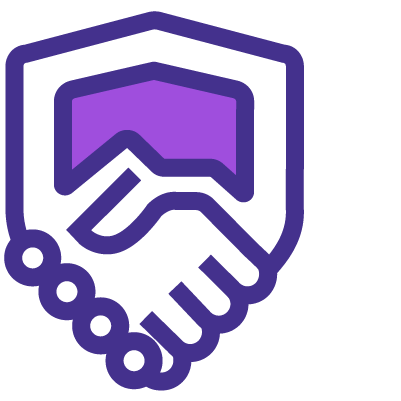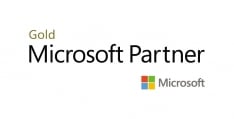Microsoft Security Operations Analyst SC200 Course Outline
Module 1: Introduction to Microsoft 365 Threat Protection
- Introduction
- Explore Extended Detection and Response (XDR) Response Use Cases
- Understand Microsoft 365 Defender in a Security Operations Centre (SOC)
- Explore Microsoft Security Graph
- Investigate Security Incident in Microsoft 365 Defender
Module 2: Mitigate Incidents Using Microsoft 365 Defender
- Introduction
- Use the Microsoft 365 Defender Portal
- Manage Incidents
- Investigate Incidents
- Manage and Investigate Alerts
- Manage Automated Investigations
- Use the Action Centre
- Explore Advanced Hunting
- Investigate Azure AD Sign-In Logs
- Understand Microsoft Secure Score
- Analyse Threat Analytics
- Analyse Reports
- Configure the Microsoft 365 Defender Portal
Module 3: Protect Your Identities with Azure AD Identity Protection
- Introduction
- Azure AD Identity Protection Overview
- Detect Risks with Azure AD Identity Protection Policies
- Investigate and Remediate Risks Detected by Azure AD Identity Protection
Module 4: Remediate Risks with Microsoft Defender for Office 365
- Introduction to Microsoft Defender for Office 365
- Automate, Investigate, and Remediate
- Configure, Protect, and Detect
- Simulate Attacks
Module 5: Safeguard Your Environment with Microsoft Defender for Identity
- Introduction to Microsoft Defender for Identity
- Configure Microsoft Defender for Identity Sensors
- Review Compromised Accounts or Data
- Integrate with Other Microsoft Tools
Module 6: Secure Your Cloud Apps and Services with Microsoft Defender for Cloud Apps
- Introduction
- Understand the Defender for Cloud Apps Framework
- Explore Your Cloud Apps with Cloud Discovery
- Protect Your Data and Apps with Conditional Access App Control
- Walk Through Discovery and Access Control with Microsoft Defender for Cloud Apps
- Classify and Protect Sensitive Information
- Detect Threats
Module 7: Respond to Data Loss Prevention Alerts Using Microsoft 365
- Introduction
- Describe Data Loss Prevention Alerts
- Investigate Data Loss Prevention Alerts in Microsoft Purview
- Investigate Data Loss Prevention Alerts in Microsoft Defender for Cloud Apps
Module 8: Manage Insider Risk in Microsoft Purview
- Insider Risk Management Overview
- Introduction to Managing Insider Risk Policies
- Create and Manage Insider Risk Policies
- Knowledge Check
- Investigate Insider Risk Alerts
- Take Action on Insider Risk Alerts through Cases
- Manage Insider Risk Management Forensic Evidence
- Create Insider Risk Management Notice Templates
Module 9: Investigate Threats by Using Audit Features in Microsoft 365 Defender and Microsoft Purview Standard
- Introduction to Threat Investigation with the Unified Audit Log (UAL)
- Explore Microsoft Purview Audit Solutions
- Implement Microsoft Purview Audit (Standard)
- Start Recording Activity in the Unified Audit Log
- Search the Unified Audit Log (UAL)
- Export, Configure, and View Audit Log Records
- Use Audit Log Searching to Investigate Common Support Issues
Module 10: Investigate Threats Using Audit in Microsoft 365 Defender and Microsoft Purview (Premium)
- Introduction to Threat Investigation with the Unified Audit Log (UAL)
- Explore Microsoft Purview Audit Solutions
- Implement Microsoft Purview Audit (Standard)
- Start Recording Activity in the Unified Audit Log
- Search the Unified Audit Log (UAL)
- Export, Configure, and View Audit Log Records
- Use Audit Log Searching to Investigate Common Support Issues
Module 11: Investigate Threats with Content Search in Microsoft Purview
- Introduction
- Explore Microsoft Purview eDiscovery Solutions
- Create a Content Search
- View the Search Results and Statistics
- Export the Search Results and Search Report
- Configure Search Permissions Filtering
- Search for and Delete Email Messages
Module 12: Protect Against Threats with Microsoft Defender for Endpoint
- Introduction to Microsoft Defender for Endpoint
- Practice Security Administration
- Hunt Threats within Your Network
Module 13: Deploy the Microsoft Defender for Endpoint Environment
- Introduction
- Create Your Environment
- Understand Operating Systems Compatibility and Features
- Onboard Devices
- Manage Access
- Create and Manage Roles for Role-Based Access Control
- Configure Device Groups
- Configure Environment Advanced Features
Module 14: Implement Windows Security Enhancements with Microsoft Defender for Endpoint
- Introduction
- Understand Attack Surface Reduction
- Enable Attack Surface Reduction Rules
Module 15: Perform Device Investigations in Microsoft Defender for Endpoint
- Introduction
- Use the Device Inventory List
- Investigate the Device
- Use Behavioral Blocking
- Detect Devices with Device Discovery
Module 16: Perform Actions on a Device Using Microsoft Defender for Endpoint
- Introduction
- Explain Device Actions
- Run Microsoft Defender Antivirus Scan on Devices
- Collect Investigation Package from Devices
- Initiate Live Response Session
Module 17: Perform Evidence and Entities Investigations Using Microsoft Defender for Endpoint
- Introduction
- Investigate a File
- Investigate a User Account
- Investigate an IP Address
- Investigate a Domain
Module 18: Configure and Manage Automation Using Microsoft Defender for Endpoint
- Introduction
- Configure Advanced Features
- Manage Automation Upload and Folder Settings
- Configure Automated Investigation and Remediation Capabilities
- Block At-Risk Devices
Module 19: Configure for Alerts and Detections in Microsoft Defender for Endpoint
- Introduction
- Configure Advanced Features
- Configure Alert Notifications
- Manage Alert Suppression
- Manage Indicators
Module 20: Utilise Vulnerability Management in Microsoft Defender for Endpoint
- Introduction
- Understand Vulnerability Management
- Explore Vulnerabilities on Your Devices
- Manage Remediation
Module 21: Plan for Cloud Workload Protections Using Microsoft Defender for Cloud
- Introduction
- Explain Microsoft Defender for Cloud
- Describe Microsoft Defender for Cloud Workload Protections
- Exercise – Microsoft Defender for Cloud Interactive Guide
- Enable Microsoft Defender for Cloud
Module 22: Connect Azure Assets to Microsoft Defender for Cloud
- Introduction
- Explore and Manage Your Resources with Asset Inventory
- Configure Auto Provisioning
- Manual Log Analytics Agent Provisioning
Module 23: Connect Non-Azure Resources to Microsoft Defender for Cloud
- Introduction
- Protect Non-Azure Resources
- Connect Non-Azure Machines
- Connect Your AWS Accounts
- Connect Your GCP Accounts
Module 24: Manage Your Cloud Security Posture Management
- Introduction
- Explore Secure Score
- Explore Recommendations
- Measure and Enforce Regulatory Compliance
- Understand Workbooks
Module 25: Explain Cloud Workload Protections in Microsoft Defender for Cloud
- Introduction
- Understand Microsoft Defender for Servers
- Understand Microsoft Defender for App Service
- Understand Microsoft Defender for Storage
- Understand Microsoft Defender for SQL
- Understand Microsoft Defender for Open-Source Databases
- Understand Microsoft Defender for Key Vault
- Understand Microsoft Defender for Resource Manager
- Understand Microsoft Defender for DNS
- Understand Microsoft Defender for Containers
- Understand Microsoft Defender Additional Protections
Module 26: Remediate Security Alerts Using Microsoft Defender for Cloud
- Introduction
- Understand Security Alerts
- Remediate Alerts and Automate Responses
- Suppress Alerts from Defender for Cloud
- Generate Threat Intelligence Reports
- Respond to Alerts from Azure Resources
Module 27: Construct KQL Statements for Microsoft Sentinel
- Introduction
- Understand the Kusto Query Language Statement Structure
- Use the Search Operator
- Use the Where Operator
- Use the Let Statement
- Use the Extend Operator
- Use the Order By Operator
- Use the Project Operators
Module 28: Analyse Query Results Using KQL
- Introduction
- Use the Summarise Operator
- Use the Summarise Operator to Filter Results
- Use the Summarise Operator to Prepare Data
- Use the Render Operator to Create Visualisations
Module 29: Build Multi-Table Statements Using KQL
- Introduction
- Use the Union Operator
- Use the Join Operator
Module 30: Work with Data in Microsoft Sentinel Using Kusto Query Language
- Introduction
- Extract Data from Unstructured String Fields
- Extract Data from Structured String Data
- Integrate External Data
- Create Parsers with Functions
Module 31: Introduction to Microsoft Sentinel
- Introduction
- What is Microsoft Sentinel?
- How Microsoft Sentinel Works?
- When to Use Microsoft Sentinel?
Module 32: Create and Manage Microsoft Sentinel Workspaces
- Introduction
- Plan for the Microsoft Sentinel Workspace
- Create a Microsoft Sentinel Workspace
- Manage Workspaces Across Tenants Using Azure Lighthouse
- Understand Microsoft Sentinel Permissions and Roles
- Manage Microsoft Sentinel Settings
- Configure Logs
Module 33: Query Logs in Microsoft Sentinel
- Introduction
- Query Logs in the Logs Page
- Understand Microsoft Sentinel Tables
- Understand Common Tables
- Understand Microsoft 365 Defender Tables
Module 34: Use Watchlists in Microsoft Sentinel
- Introduction
- Plan for Watchlists
- Create a Watchlist
- Manage Watchlists
Module 35: Utilise Threat Intelligence in Microsoft Sentinel
- Introduction
- Define Threat Intelligence
- Manage Your Threat Indicators
- View Your Threat Indicators with KQL
Module 36: Connect Data to Microsoft Sentinel Using Data Connectors
- Introduction
- Ingest Log Data with Data Connectors
- Understand Data Connector Providers
- View Connected Hosts
Module 37: Connect Microsoft Services to Microsoft Sentinel
- Introduction
- Plan for Microsoft Services Connectors
- Connect the Microsoft Office 365 Connector
- Connect the Azure Active Directory Connector
- Connect the Azure Active Directory Identity Protection Connector
- Connect the Azure Activity Connector
Module 38: Connect Microsoft 365 Defender to Microsoft Sentinel
- Introduction
- Plan for Microsoft 365 Defender Connectors
- Connect the Microsoft 365 Defender Connector
- Connect Microsoft Defender for Cloud Connector
- Connect Microsoft Defender for IoT
- Connect Microsoft Defender Legacy Connectors
Module 39: Connect Windows Hosts to Microsoft Sentinel
- Introduction
- Plan for Windows Hosts Security Events Connector
- Connect Using the Windows Security Events via AMA Connector
- Connect Using the Security Events via Legacy Agent Connector
- Collect Sysmon Event Logs
Module 40: Connect Common Event Format Logs to Microsoft Sentinel
- Introduction
- Plan for Common Event Format Connector
- Connect Your External Solution Using the Common Event Format Connector
Module 41: Connect Syslog Data Sources to Microsoft Sentinel
- Introduction
- Plan for Syslog Data Collection
- Collect Data from Linux-Based Sources Using Syslog
- Configure the Data Collection Rule for Syslog Data Sources
- Parse Syslog Data with KQL
Module 42: Connect Threat Indicators to Microsoft Sentinel
- Introduction
- Plan for Threat Intelligence Connectors
- Connect the Threat Intelligence TAXII Connector
- Connect the Threat Intelligence Platforms Connector
- View Your Threat Indicators with KQL
Module 43: Threat Detection with Microsoft Sentinel Analytics
- Introduction
- Exercise - Detect Threats with Microsoft Sentinel Analytics
- What is Microsoft Sentinel Analytics?
- Types of Analytics Rules
- Create an Analytics Rule from Templates
- Create an Analytics Rule from Wizard
- Manage Analytics Rules
- Exercise - Detect Threats with Microsoft Sentinel Analytics
Module 44: Automation in Microsoft Sentinel
- Introduction
- Understand Automation Options
- Create Automation Rules
Module 45: Security Incident Management in Microsoft Sentinel
- Introduction
- Exercise - Set Up the Azure Environment
- Understand Incidents
- Incident Evidence and Entities
- Incident Management
- Exercise - Investigate an Incident
Module 46: Identify Threats with Behavioral Analytics
- Introduction
- Understand Behavioral Analytics
- Explore Entities
- Display Entity Behavior Information
- Use Anomaly Detection Analytical Rule Templates
Module 47: Data Normalisation in Microsoft Sentinel
- Introduction
- Understand Data Normalisation
- Use ASIM Parsers
- Understand Parameterised KQL Functions
- Create an ASIM Parser
- Configure Azure Monitor Data Collection Rules
Module 48: Query, Visualise, and Monitor Data in Microsoft Sentinel
- Introduction
- Exercise - Query and Visualise Data with Microsoft Sentinel Workbooks
- Monitor and Visualise Data
- Query Data Using Kusto Query Language
- Use Default Microsoft Sentinel Workbooks
- Create a New Microsoft Sentinel Workbook
- Exercise - Visualise Data Using Microsoft Sentinel Workbooks
Module 49: Manage Content in Microsoft Sentinel
- Introduction
- Use Solutions from the Content Hub
- Use Repositories for Deployment
Module 50: Explain Threat Hunting Concepts in Microsoft Sentinel
- Introduction
- Understand Cybersecurity Threat Hunts
- Develop a Hypothesis
- Explore MITRE ATT and CK
Module 51: Threat Hunting with Microsoft Sentinel
- Introduction
- Exercise Setup
- Explore Creation and Management of Threat-Hunting Queries
- Save Key Findings with Bookmarks
- Observe Threats Over Time with Livestream
- Exercise - Hunt for Threats by Using Microsoft Sentinel
Module 52: Use Search Jobs in Microsoft Sentinel
- Introduction
- Hunt with a Search Job
- Restore Historical Data
Module 53: Hunt for Threats Using Notebooks in Microsoft Sentinel
- Introduction
- Access Azure Sentinel Data with External Tools
- Hunt with Notebooks
- Create a Notebook
- Explore Notebook Code
 To help and support our clients we are providing a limited number of 250 daily discount codes. Hurry, first come, first served!
To help and support our clients we are providing a limited number of 250 daily discount codes. Hurry, first come, first served!












 Top 50 Microsoft Security Engineer Interview Questions
Top 50 Microsoft Security Engineer Interview Questions What Is Microsoft Security Copilot and How Can It Be Utilized?
What Is Microsoft Security Copilot and How Can It Be Utilized? Microsoft Security Compliance Toolkit: How do you use it?
Microsoft Security Compliance Toolkit: How do you use it? Microsoft Security Account Manager (SAM): A Comprehensive Guide
Microsoft Security Account Manager (SAM): A Comprehensive Guide Top 8 Microsoft Security Essentials Alternatives: Find Better Options
Top 8 Microsoft Security Essentials Alternatives: Find Better Options Zoom vs Microsoft Teams Security: Features Comparison
Zoom vs Microsoft Teams Security: Features Comparison Microsoft 365 Security: Features and Benefits
Microsoft 365 Security: Features and Benefits














 If you wish to make any changes to your course, please
If you wish to make any changes to your course, please


